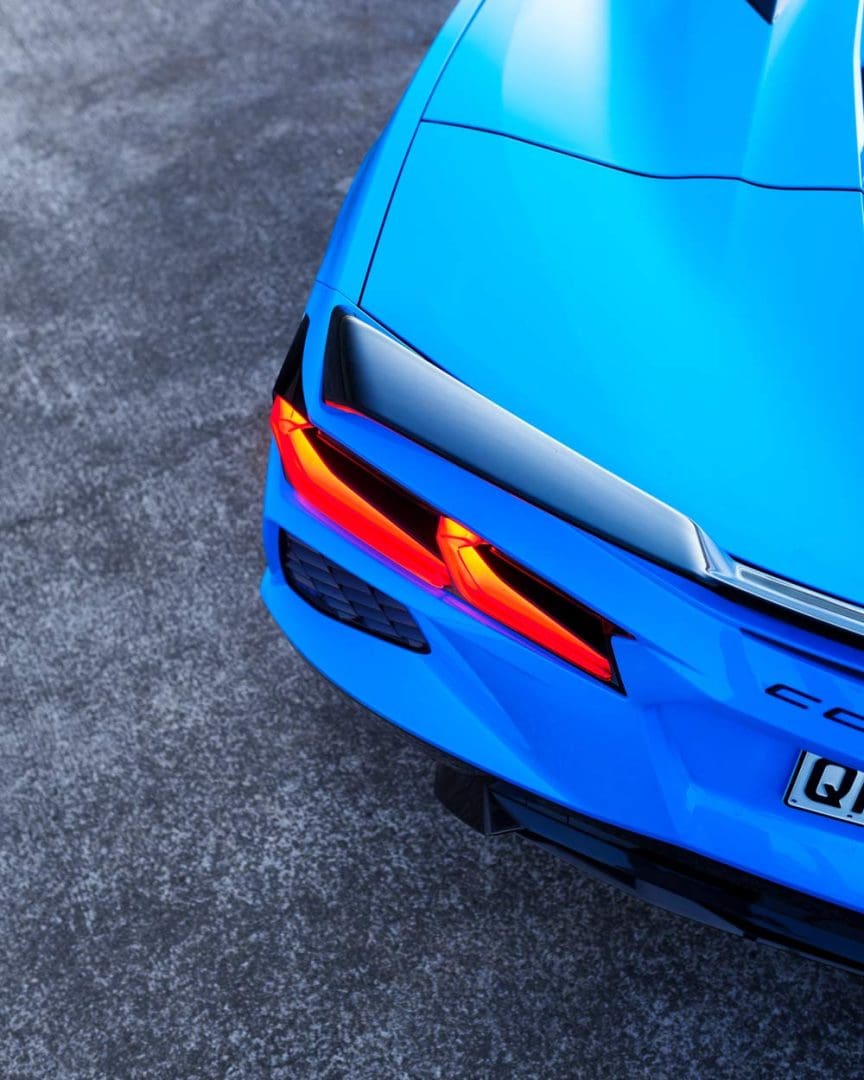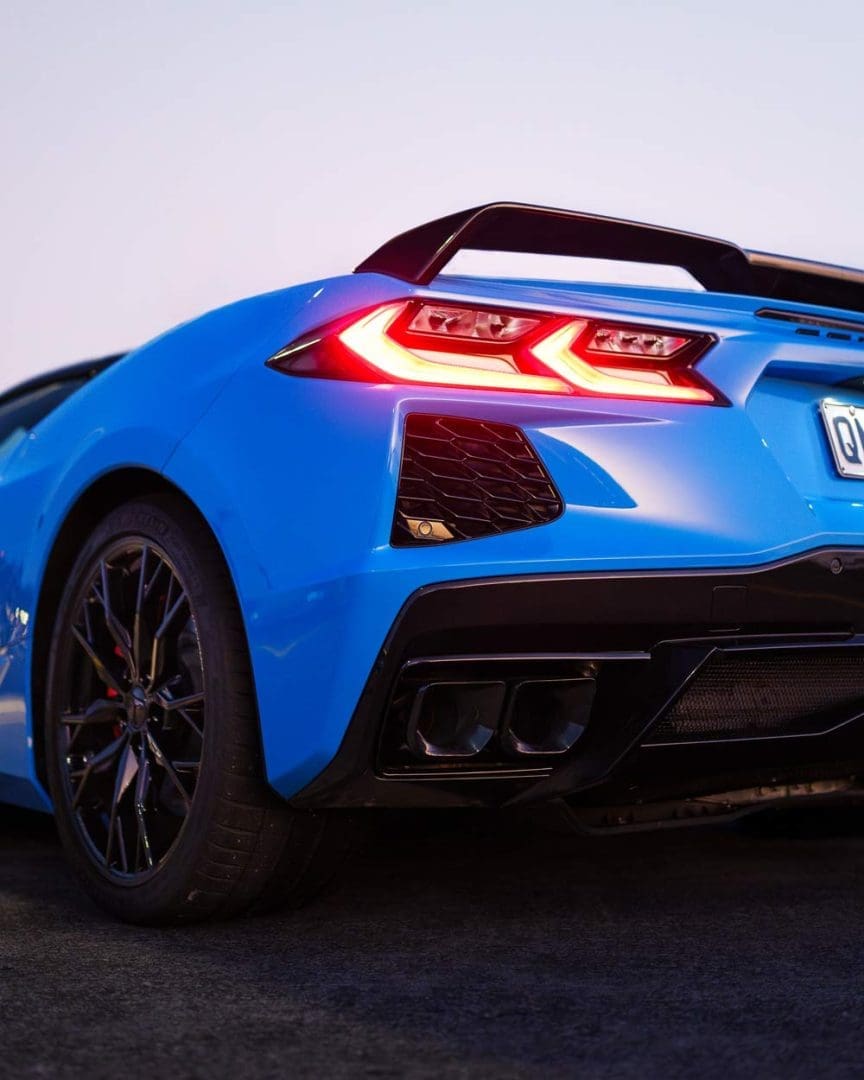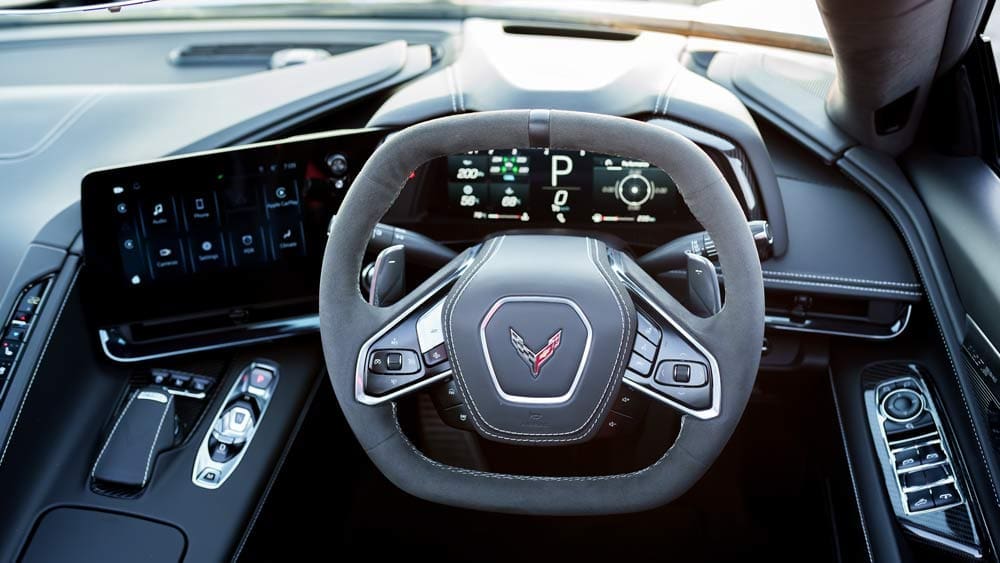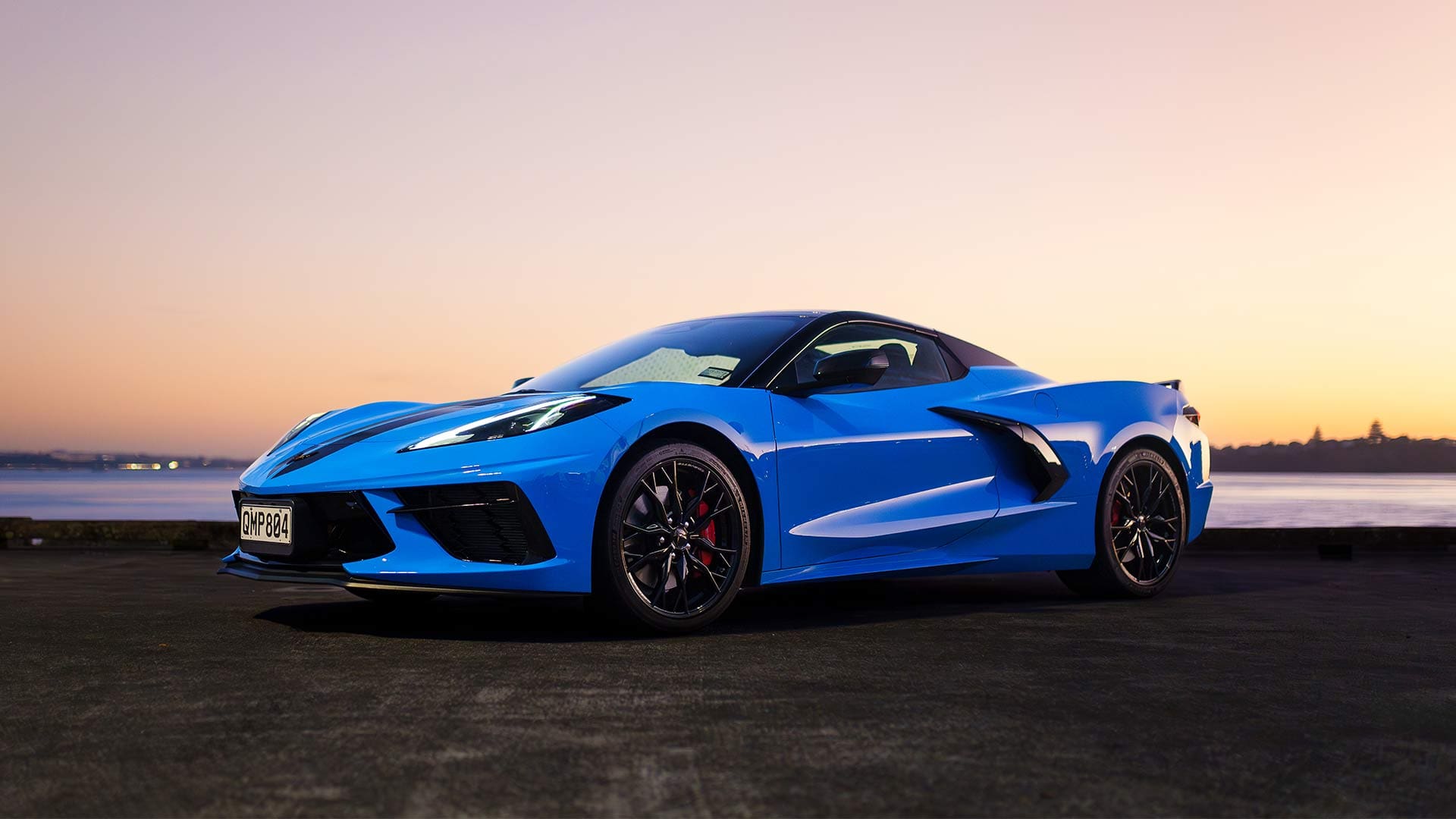The 2024 Corvette Stingray, Updating a Classic
I’m seated in an electric blue Corvette Stingray with a huge smile on my face, I haven’t been this excited to drive a car in months. First appearing on race tracks in the ’50s and showrooms in the ’60s, it’s an icon with a cult following. A classic that got me into cars yet I’m driving a 2024 model, so a few things have changed over the years. The question is, can you update a classic and keep the magic? That’s what I’m here to find out.
Just seeing this beast in the showroom got my heart racing and my smile widening. I was about to drive a legend, and it didn’t disappoint. Its big, bold, brash design looks stunning at first glance and every glance after that. The moment you enter, you know you’re in a special vehicle. The seats are full race quality yet comfortable, and you’re wedged into a veritable cockpit, with instruments surrounding you within easy reach. Leather and Alcantara adorn the interior—it’s well done and handsome. The cockpit might be a little compact for anyone over six feet tall; my six-foot-four friend didn’t fit.
I’ve never seen a gear shift panel like this. It’s different, but I quickly grew to like it—it’s both handsome and functional. The steering wheel is functional yet uncluttered, blending brilliantly with the dash where digital driver instruments swap based on drive mode. The flat-top steering wheel gives you an uninterrupted view of both the road and the excellent heads-up display. This is a driver’s car, not a toy.

The console screen isn’t the largest, yet it has what you need, where you need it, all within fingertip distance. Every control is easy to reach, and despite the assertive design, the ergonomics quickly become second nature. Clever features abound: flip up the rearview mirror, and it becomes a rear view screen. Having the choice of both is the best of both worlds—kudos to Corvette for this feature.
The rear and front trunks have remote open, making access easy. Speaking of access, most mid-engined cars have a wide door sill, but not this one. It has a sill, yes, but you can get in and out without too much gymnastics. Despite its accessibility, this car is definitely designed to go to the track and drive there with everything you need. There’s room for a helmet, and with a data recorder and lap timer, you can have a lot of fun when you’re there.
The car is low, of course, but with the push of a button, you can easily raise it 50mm. The car sports GM’s excellent magnetic suspension, which is adjustable and delivers. And the attractive 19” and 20” wheels wear Michelin Pilot Sport 4S boots. It’s all supplemented with a great camera package.

Weather, Tour, Sport, and Track modes adjust steering, suspension, transmission, exhaust, noise, and brakes, each making the overall package more aggressive. ‘My Mode’ is configurable, and the steering-mounted Z-Mode button turns on full attack.
I drove out of town in Tour with the top down. Yes, this is a convertible hardtop, meaning you get lower noise and better weather tightness than a soft top, especially if you leave not two but three windows up. That’s right—there’s a little third rear window behind the seats. In normal driving, it’s easy to drive and benign in the handling department, making it a nice cruiser. When I reached Coromandel’s windiest roadsI got to use Sport mode and open it up. Wow. I went from liking it to loving it. This is how the car is meant to be driven! The engine is incredibly responsive, with a smooth quick transmission that picks right gear for you in most situations, or with an easy grab of the paddles, you can select your own.
The mechanical grip is good, meaning the electronic aids are rarely needed. Like a good, naturally aspirated rear-wheel-drive sports car, power delivery and handling are predictable. If you give it excess power at any stage, you know what it’s going to do—it doesn’t bite you. That said, it’s got enough pep and feedback that it’s always an engaging drive. The power plant in this iteration of the Stingray is a mid-mounted 6.2-litre, naturally aspirated V8. No turbos, no hybrid—just a rev-happy engine, 376 kW, and 639 Nm of torque integrated with this fabulous eight-speed transmission. It’s very drivable.

The Stingray is a classic, of course, and it always had a large-capacity engine in front of the driver, but now that the engine has moved behind the driver and in front of the rear wheel, making it mid-engine, it’s a very different proposition. It’s moved from muscle to supercar, and this is a genuine supercar. A different layout means driver feedback is different because all the noisy bits are behind you. You get relatively more road noise from the front wheels, and unless you’re really working it, the engine is surprisingly quiet. It sounds gorgeous, but at open road speeds, there’s very little mechanical noise.
This car is equipped with an accelerometer, so what’s one to do? Let’s try 0-100. I stamp the throttle hard—there’s a little bouncing at the back end until firm grip is achieved—and hit the speed limiter in 3.4 seconds. Wow. But my takeoff wasn’t the best. Then I realize I’m in Touring. I switch to Sport to firm everything up and go again. 2.9 seconds! Just like that, I hit the manufacturer’s number, and I didn’t even use Track mode. Oh, and I had the roof open. This is an outrageously quick car.
With the engine high in the rev range; it’s simply one of the most enjoyable cars I’ve driven. While I wouldn’t call it refined, that’s kind of the point. It’s raw American grunt, and I like that. It’s a car for drivers, not technicians. Sure, you can put more technology between you and the road surface if you want, but this car will appeal to people who can really drive and want to experience a lot of fun. You can easily overwhelm the rear tires with power if you want to, but that’s a choice because it’s predictable. You know what’s going to happen. All the driver aids are there. The lane-holding system is one of the more acceptable ones I’ve used—it gives you a gentle nudge on occasion to suggest a preferred positioning in the lane without being too assertive.

This car rewards those who drive it as it’s meant to be driven—it’s not for wafting from point A to point B. No, it’s for driving. And not driving… There is no better car to be seen in—a slow drive along the waterfront is guaranteed to attract admirers. Pull over anywhere, and a crowd of onlookers gather to stare. Young and old, men and women alike, are drawn to this like nothing else. This is where the remote engine start is a winner—if you want to put on a show, you can start it up over meters away, and the cold start is just gorgeous. You can also open the roof remotely to really confuse people. I didn’t do this because I kept the roof open the entire time. So yes, parking is fun, cruising is excellent, and so is driving like you mean it.
I was away for two nights, and the car’s practicality shone. Good luggage space, room for two overnight bags at the front and more bags in the back. Unlike some mid-engined supercars, a couple can comfortably go away for a long weekend in this car and not leave anything behind.
Summary
This is an incredible car—gobs of power, engaging handling, dashing performance, great looks, and a desirable marque. Stingray has always been a great brand, and Corvette took a gamble when they moved the engine behind the driver. Yet they delivered.
It’s one of the most drivable supercars I’ve experienced. It sits in a special class: a regular, everyday, practical supercar with oodles of space for a weekend away and effortless performance in an engaging track-ready package.
To say I was impressed would be an understatement. It exceeded expectations across the board and has done nothing but fan the flame of my desire for a Stingray. A true American classic.

